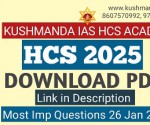HTET Study Material
HTET Study Material
FREE DOWNLOAD
HTET 2013
SOCIAL SCIENCE
MOST IMPORTANT FACTS
Neolithic Age:
Beginning of agriculture,Another important discovery of this period was the wheel.
Use of Metals: Chalcolithic Age
Copper was the first metal to be melted by heat in order to make implements.
INDUS VALLEY CIVILISATION
The most important cities were Harappa (Western Punjab), MohenjoDaro
(Sindh), Lothal (Gujarat), Kalibangan (Rajasthan), Ropar (Punjab), Banawali
and
Rakhigarhi (Haryana), and Dholavira (Gujarat).
One of the most interesting features of this civilisation was the emergence of the first urban societies in South Asia. The most remarkable aspect was the high level of sophistication in town planning, crafts and culture. The people lived in well-planned cities.
In mohanjodaro, the most striking feature was the Great Bath (180 ft long and 108 ft long and 108 ft wide). The Great Granary of Harappa was another important building.
Evidence of rice has been found at Lothal and Rangpur. Furrow marks found at Kalibangan show that ploughing was known to them.
Iron was not known to them.
The cult of Mother Goddess seems to have been very popular among them. Many figurines of Mother Goddess have been found.
One male deity has also been found at Mohenjo-Daro which has been called the prototype of Lord Shiva (Pashupati).
The Rig- Vedic Age:
Popular assemblies of all members of the Janas, called Sabhas and Samitis, had an important say in public affairs. A number of deities were worshipped, Indra being the most important of them.
The later vedic age:
The Later Vedic literature comprised of the following books, that is, the three Vedas – Sama Veda, Yajur Veda and Atharva Veda. There were also commentaries on all the four Vedas called
Brahmanas, Aranyakas and Upanishads.
A large number of sites belonging to this period have also been excavated. They are all marked by a typical pottery called Painted Grey Ware (PGW), and so are known as PGW sites.
Castes began to emerge and crystallise in the form of four Varnas – Brahmanas, Kshatriyas, Vaishyas and Shudras.
Buddhism
Gautama Buddha, the founder of Buddhism, was born in 563 BC at Lumbini which is situated near the Indo-Nepal Border. He was the son of Shuddhodhana, the chief of Shakya of Kapilavastu. At the age of 29, Gautama left home and attained Bodhi
(enlightenment) at Bodhgaya under a pipal tree. He delivered his first sermon at Sarnath near Varanasi. His teachings included four Noble Truths (Arya Satya) and
Eightfold Path (Ashtangika Marga).
Buddha suggested a ‘Middle Path’ – away from both extreme luxury as well as
extreme austerity. He also laid down a code of conduct such as non-killing and nonstealing for his followers. He died at the age of 80 (483 BC) at Kushinagar in Uttar Pradesh.
Jainism:
Rishabhanath, the first Tirthankara, is known to be the founder of Jainism.
Vardhamana Mahavira was the 24th Tirthankara of this sect, Parshvanath being the23rd
one. Mahavira was born in 540 BC at Kundagram near Vaishali (Bihar). His father was the Chief of Jhatrika Kshatriya clan. Mahavira became an ascetic at the age of 30 years and died at Pawapuri in 468 BC near Rajagriha. His followers came to be known as ‘Jainas’.
Jainism has five cardinal principles:
(i) Ahimsa or non-violence, (ii) Truthfulness,
(iii) Abstention from stealing, (iv) Non-attachment, and
(v) Celibacy or Brahmacharya.
The three jewels (Triratna) of Jainism are:
(a) Right vision (Samyak Darshana),
(b) Right knowledge (Samyak Jnana), and
(c) Right Conduct (Samyak Charita)
THE MAURYAN AGE:
An important event of Ashoka’ reign was the famous Kalinga War in 260 BC mentioned in his Rock Edict XIII. His policy of ‘dhamma’ was based on religious toleration, respect to elders, care for the old, kindness, truthfulness and purity.
The last king of the Maurya dynasty was Brihadratha.
The Sangam Age:
The word ‘Sangam’ means an assembly of scholars of literacy figures, held under the royal patronage of Pandyan kings of Madurai.
Early Tamil literature comprised works such as Tolkappiyam, the Eight Anthologies (Ettutogai) the ‘ten Idylls’ (pattupattu), the ‘Eighteen Minor Works’ and the three Epics (Shilappadikaram, Manimekalai and Sivaga Sindamani).
THE KUSHANA AGE
The first ruler of the Kushanas was Kujula Kadphises. He was succeeded by Vima Kadphises.
The greatest ruler of the Kushana dynasty was Kanishka, who became king after Vima.
Purushapura (Peshawar) was his capital.
THE GUPTA AGE
Maharaja Shri Gupta is said to be the founder of the Gupta dynasty. Chandragupta I (319-355 AD), who assumed the title of Maharajadhiraja, was the first important Gupta Monarch. Another
important Gupta emperor was Samudragupta. The eulogy, composed by his court poet Harisena, which is available as Allahabad Pillar Inscription, gives a vivid account
of Samudragupta’s military exploits. Besides being a great conqueror and ruler, he
was also a poet of high order, patron of art and learning and a musician. He also
performed ‘Ashwamedha yajna’ – a symbol of imperial authority.
Skandagupta (455-467 AD), who repulsed the Hun invasion several times.
Geography Part
1.Mountain Types
1. Block Mountain -Ruwenzori Mountain range in Central Africa, Black forest, Vosges,bohemian massif and the Sierra Nevada in the south-western USA.
2. Fold Mountains- Himalayas, Aravalli, Appalachians, Alps, Rockies, Andes.
3. Relict Mountains -Aravalli, Rajmahal, Nilgiris, Satpuras, Western Ghats.
4. Dome Mountain -Henry mountain, USA
2.India is the seventh largest country in the world. The north south extent is 3214km & E-W 2933 Km. The mainland coastline is 6100 km long & including islands it is 7516 km long. Its geographical area is around 33 lakh sq km (or 328.72 million hectares). The southernmost point (Indira Point) is 6 degree 30 minutes north latitude.
3.Narcondam & Barren Island are volcanic islands of India.
4.Most of the sandalwood of India comes from Karnataka.
6.Nuclear power plants in India are at Tarapur(maharastra), Rawatbhata(rajasthan), Kalpakkam(tamilnadu), Narora (UP), Kaiga (Karnataka) & Kakarapara (Gujarat).
7.Direct & Indirect Taxes
Direct Tax Indirect Tax
Corporation Tax Excise Duties
Income Tax Service Tax
Interest Tax Central Value Added Tax (Vat)
Expenditure Tax Sales Tax
Wealth Tax Property Tax
Gift Tax Octroi
Estate Duty Customs Duties
Contd….
1.Selected Terms:
Revenue Deficit- Difference between revenue expenditure & revenue receipts
Budget Deficit - Difference between total expenditure & revenue receipts
Fiscal Deficit -Budget deficit plus non debt creating capital receipts
2.Types of unemployments:
Functional employment occurs when people change from one job to another & there is an interval. This can happen even in a situation of full employment.
Structural employment happens when jobs exist for qualified persons but the unemployed do not have the matching qualifications. It also occurs when labour is available, but factors of production are missing.
Cyclical unemployment arises out of cycles of recession. Disguised unemployment is when people are employed but their marginal productivity is zero.
Contd…
















